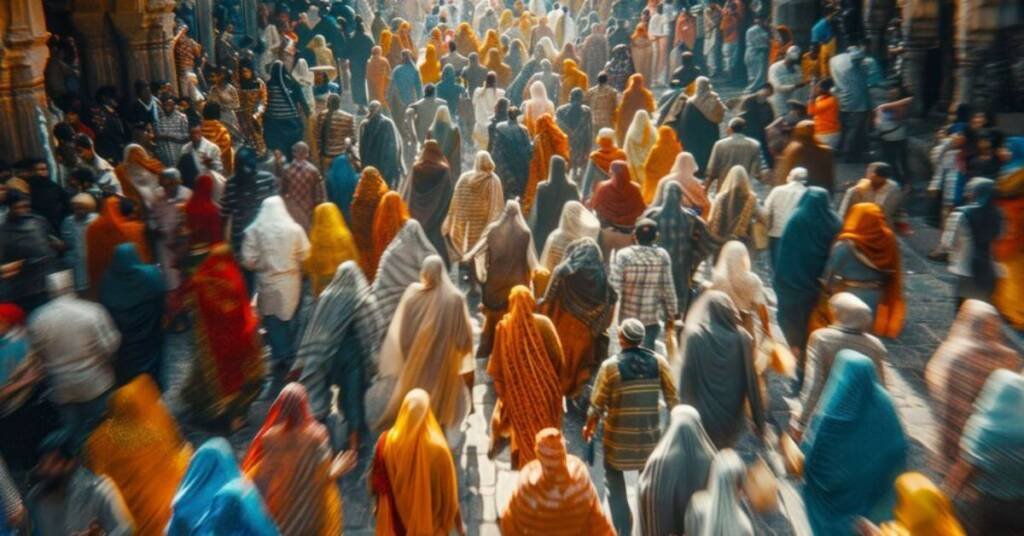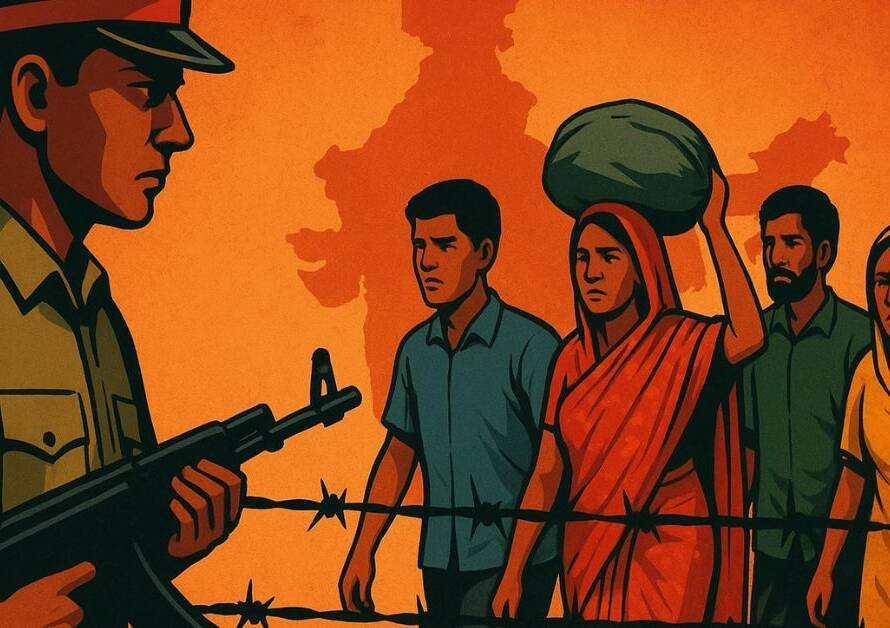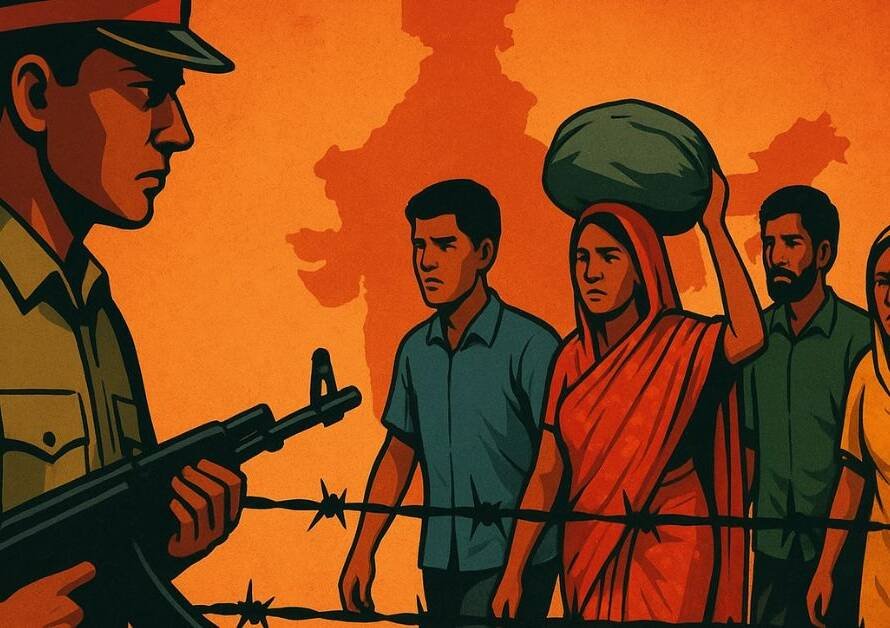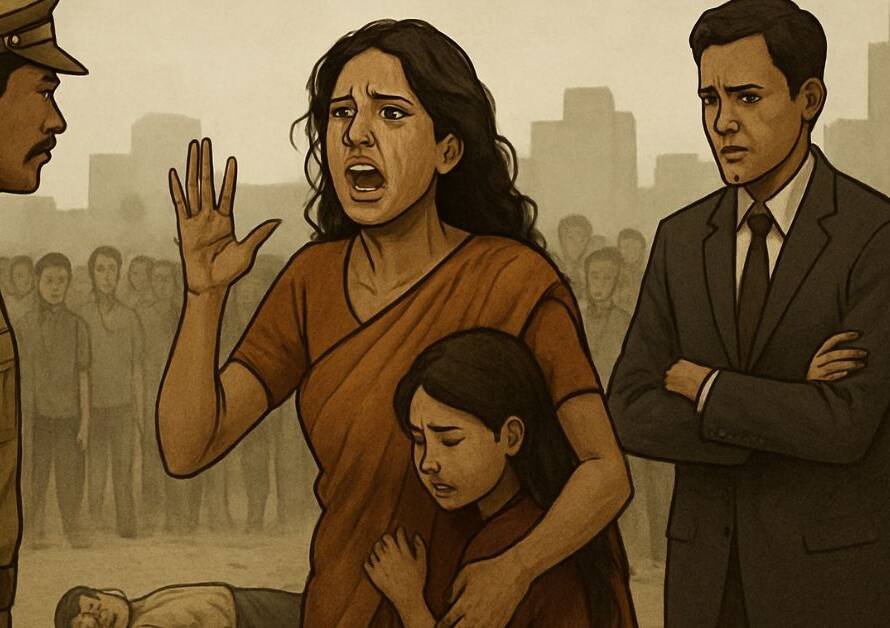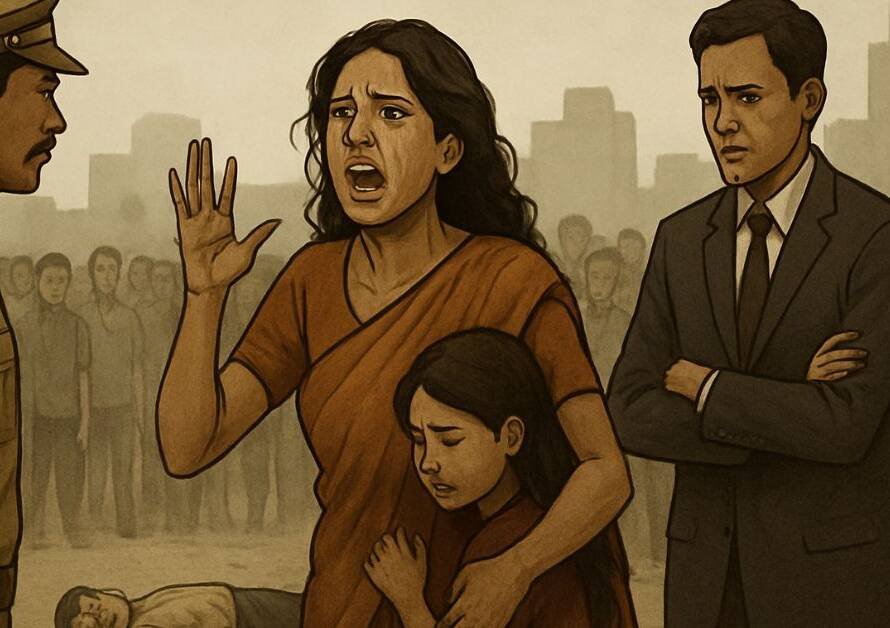Hindus today face a complex set of challenges that threaten their cultural identity, religious freedom, and demographic strength. These issues are not just domestic but have global implications, impacting the vision of a unified Hindu nation. The problems include radical Islamic jihad, terrorism, unchecked population growth, internal disunity, and external political dynamics. To effectively safeguard Hindus, Hindutva, and the broader vision of a Hindu Rashtra, it is crucial to understand these issues deeply and craft a comprehensive, strategic response.
Current Problems
Radical Islamic Jihad and Terrorism
Rising Radicalization: Radical Islamist groups continue to spread a jihadist ideology that seeks to establish an Islamic caliphate. Organizations like ISIS, Al-Qaeda, and their local affiliates (e.g., PFI, Indian Mujahideen) have openly targeted Hindus, promoting violence and hatred against non-Muslims.
Terror Attacks and Violence: India has faced numerous terror attacks aimed at destabilizing the nation and creating fear within the Hindu community. Incidents like the Mumbai 26/11 attacks, the Pulwama attack, and bomb blasts in temples and public spaces are stark reminders of the persistent threat posed by Islamic terrorism.
Love Jihad: There is growing evidence and concern about systematic efforts by radical elements to lure Hindu girls into conversions under the guise of marriage, often referred to as ‘Love Jihad.’ This tactic not only disrupts families but also aims to alter the demographic landscape.
Population Explosion and Demographic Shifts
Uncontrolled Population Growth: The unchecked population growth among certain communities, particularly Muslims, has created a demographic imbalance in many states. This rapid increase, often driven by religious beliefs against family planning, has led to social and economic pressures, exacerbating communal tensions.
Illegal Immigration: Massive illegal immigration from Bangladesh has transformed the demographic profile of states like Assam, West Bengal, and even parts of Bihar. These migrants often assimilate into local Muslim communities, posing a direct threat to the cultural and demographic integrity of Hindu-majority areas.
Changing Demographics: In several districts of West Bengal, Assam, and Kerala, the Hindu population has declined significantly, leading to increased communal tensions, targeted violence, and political instability. This shift threatens the social fabric and cultural identity of these regions.
Political and Legal Marginalization
Appeasement Politics: Political parties often engage in appeasement of Muslim communities for vote bank politics, sidelining Hindu concerns. This results in policies and welfare schemes that favor minorities, creating a sense of alienation among Hindus.
State Control of Hindu Temples: Unlike places of worship of other communities, Hindu temples remain under state control, leading to financial exploitation and mismanagement of temple assets. This legal disparity restricts Hindus from exercising complete religious freedom.
Cultural and Religious Attacks
Desecration of Temples: There has been a rise in incidents of vandalism and desecration of Hindu temples across India. This not only hurts religious sentiments but also signifies a broader attempt to undermine Hindu cultural sites.
Vilification of Hindu Beliefs: Mainstream media and certain intellectual circles often present a distorted narrative of Hindu customs and traditions, portraying them as regressive. This negative portrayal affects public perception and erodes cultural pride.
Internal Disunity and Lack of Solidarity
Caste Divisions: Caste-based divisions continue to weaken Hindu unity, making the community vulnerable to external exploitation and internal strife.
Ideological Conflicts: There is a lack of agreement among various Hindu organizations on the goals of Hindutva. These ideological conflicts lead to fragmented efforts and diluted impact.
Key Challenges
Radicalization and Jihadi Threats
The growing influence of radical Islamic ideologies poses a direct threat to the safety and security of Hindus. The spread of jihadist narratives and the involvement of radical groups in orchestrating violence against Hindus need urgent attention.
Managing Demographic Balance
Unchecked population growth among Muslims and the effects of illegal immigration are altering the demographic balance, especially in border states. This shift threatens the cultural and political landscape, posing a risk to Hindu-majority status in many regions.
Countering Anti-Hindu Propaganda
The negative portrayal of Hindutva and Hindu beliefs in media, academia, and international forums creates an unfavorable image, affecting public opinion and policy decisions. This Hinduphobia needs to be countered with factual narratives and positive stories.
Strengthening Legal and Institutional Frameworks
The existing legal framework often places hurdles in the way of Hindus seeking to protect their religious rights. The control of Hindu temples by the state and the lack of legal protections against forced conversions are significant challenges.
Way Forward: Strategic Steps for Protection and Empowerment
Uniting Hindus for a Common Cause
Creating a Unified Hindu Platform: Foster dialogue among different Hindu sects and groups to create a united front. Establish a central organization like a ‘National Hindu Council’ to represent Hindu interests effectively at national and international levels.
Promoting Caste Harmony: Work towards eliminating caste-based discrimination and promoting social harmony within the Hindu community.
Legal and Political Reforms
Amending Anti-Hindu Bias in Laws: Push for amendments in laws that discriminate against Hindus, such as laws governing temple management and religious conversions.
Implementing Strict Immigration Control: Strengthen border security and implement stricter measures to prevent illegal immigration. Expedite the process of deporting illegal immigrants who pose demographic and security threats.
Countering Radicalization and Terrorism
Intelligence and Security Measures: Enhance intelligence capabilities to monitor and counter the spread of radical Islamist ideologies. Strengthen anti-terror laws and ensure swift action against individuals and organizations promoting jihad.
Community Vigilance Programs: Establish local vigilance groups in vulnerable areas to protect Hindu families and temples from extremist attacks.
Addressing Population Growth Concerns
Promoting Population Control Measures: Advocate for the implementation of uniform family planning policies across all communities to maintain demographic balance.
Educating on Demographic Challenges: Raise awareness among Hindu communities about the long-term implications of population growth and the importance of demographic stability.
Strengthening Cultural and Educational Outreach
Promoting Hindu Education: Establish educational institutions that teach Hindu history, culture, and philosophy, countering the biased narratives in mainstream education.
Digital Media Campaigns: Utilize social media and digital platforms to spread positive stories about Hindu culture and counter anti-Hindu propaganda.
International Advocacy and Diaspora Engagement
Leveraging the Global Hindu Diaspora: Mobilize the Hindu diaspora to lobby for Hindu rights and counter Hinduphobia in international platforms.
Diplomatic Efforts: Work with friendly nations to highlight the persecution of Hindus globally and push for recognition of anti-Hindu violence as a form of religious discrimination.
Conclusion
The threats posed by radical Islamic jihad, terrorism, unchecked population growth, and internal divisions require a comprehensive and strategic response. Hindus must unite, strengthen their cultural roots, push for necessary legal and political reforms, and counter the growing radicalization. As Swami Vivekananda urged, “Arise, awake, and stop not until the goal is reached.” It is time for the Hindu community to come together, confront these challenges head-on, and work towards building a secure, prosperous, and united Hindu nation.
Examples, Case Studies, and Next Steps for Protection of Hindus, Hindutva, and Hindu Nation
To effectively address the challenges faced by Hindus, Hindutva, and the vision of a Hindu nation, it is important to analyze concrete examples and case studies that reflect the current situation and suggest actionable steps. The examples provided below highlight specific instances of threats and challenges, along with practical measures for moving forward.
Examples and Case Studies
Islamic Jihad and Terrorism
Example: The Role of PFI in Radicalization
The Popular Front of India (PFI) has been accused of promoting radical Islamic ideologies and organizing violent protests. In states like Kerala and Karnataka, PFI has been involved in incidents of communal violence, targeting Hindu activists and spreading anti-Hindu propaganda. The organization’s involvement in ‘Love Jihad’ cases and its alleged links to terror funding have raised serious concerns.
Case Study: Palghar Lynching (2020) Two Hindu sadhus were lynched by a mob in Palghar, Maharashtra, allegedly under the influence of radical groups. The incident highlighted the growing intolerance and targeted violence against Hindu religious figures. Despite the severity of the attack, the response from the administration was delayed, leading to public outrage and demands for justice.
Way Forward:
Strengthen anti-terror laws and ensure swift action against organizations involved in radicalization.
Increase community awareness and intelligence gathering in sensitive areas to prevent such incidents.
Population Explosion and Demographic Changes
Example: Demographic Shift in Assam and West Bengal
Assam and West Bengal have witnessed significant demographic changes due to illegal immigration from Bangladesh. Districts like Dhubri in Assam and Malda in West Bengal now have a Muslim majority population, leading to changes in voting patterns and increased communal tensions. The changing demography has resulted in rising demands for religious-based politics, threatening the cultural and social fabric of these regions.
Case Study: NRC Implementation in Assam (2019) The National Register of Citizens (NRC) was implemented in Assam to identify illegal immigrants. However, due to political pressures and lack of proper documentation, many genuine citizens were left out, while illegal immigrants managed to get included. This case highlighted the complexities of addressing demographic challenges and the need for effective verification mechanisms.
Way Forward:
Implement a nationwide NRC with robust verification processes to control illegal immigration.
Promote family planning and population control measures across all communities to maintain demographic balance.
Political and Legal Bias
Example: The Shah Bano Case and Political Appeasement
The Shah Bano case in 1985 was a landmark legal battle that highlighted the issue of political appeasement. The Supreme Court granted maintenance to a Muslim woman after divorce, but the then Congress government overturned the judgment under pressure from conservative Muslim groups. This incident showed how political appeasement can undermine the rights of individuals and promote a biased legal system.
Case Study: Ram Mandir-Babri Masjid Dispute The Ram Mandir dispute is one of the longest-running legal battles in India. The prolonged conflict was fueled by political interference, delaying justice and creating communal tensions. It was only in 2019 that the Supreme Court resolved the matter, allowing the construction of the Ram temple. The case demonstrated how political bias and vote-bank politics can hinder religious justice.
Way Forward:
Push for a Uniform Civil Code (UCC) to ensure equal legal rights for all communities.
Advocate for impartial legal processes and reduced political interference in religious matters.
Attacks on Hindu Temples and Religious Institutions
Example: Temple Vandalism in Andhra Pradesh (2020)
In 2020, several Hindu temples in Andhra Pradesh were vandalized, including the desecration of idols. These incidents created widespread anger among the Hindu community. Despite the repeated attacks, the local government’s response was inadequate, raising concerns about the safety of Hindu religious institutions.
Case Study: Sabarimala Temple Issue (2018) The Supreme Court’s decision to allow the entry of women of all ages into the Sabarimala temple faced strong opposition from devotees, who believed it violated the temple’s traditional practices. The issue sparked massive protests and highlighted the need for sensitivity in handling religious customs and traditions.
Way Forward:
Establish a dedicated task force to investigate and prevent attacks on Hindu temples.
Create awareness programs about the importance of preserving and respecting religious traditions.
Internal Division and Lack of Unity
Example: Caste-Based Conflicts
Caste-based discrimination and conflicts within the Hindu community have been exploited by external forces to weaken Hindu unity. In states like Tamil Nadu and Bihar, caste-based politics has often divided the Hindu vote, benefiting parties that prioritize appeasement of other communities.
Case Study: The Bhima Koregaon Violence (2018) The Bhima Koregaon violence in Maharashtra was a stark example of caste-based conflict within the Hindu community. Dalits and upper-caste groups clashed, leading to widespread violence. External political and ideological groups allegedly incited the violence, highlighting the dangers of internal division.
Way Forward:
Promote caste harmony and emphasize the concept of “Ek Bharat, Shreshtha Bharat” to foster unity.
Strengthen social reforms to reduce caste-based discrimination and promote inclusiveness.
Next Steps for Strategic Protection and Empowerment
Form a Unified Hindu Platform
Establish a national Hindu council comprising leaders from various sects and communities to address common challenges and present a united front.
Organize interfaith dialogues to reduce internal conflicts and build a cohesive strategy for the protection of Hindus.
Strengthen Legal Framework
Advocate for the implementation of a Uniform Civil Code (UCC) to ensure equal rights and reduce religious-based legal biases.
Push for stricter anti-terror laws and enhanced surveillance of radical elements targeting Hindu communities.
Raise Awareness and Promote Education
Launch nationwide campaigns to educate Hindus about their cultural heritage and the threats posed by demographic changes and external ideologies.
Introduce comprehensive value education programs in schools to instill pride in Hindu traditions and foster unity from a young age.
Engage the Global Hindu Diaspora
Mobilize the global Hindu diaspora to raise awareness about issues faced by Hindus in India and support international advocacy efforts.
Collaborate with international human rights organizations to highlight cases of Hindu persecution and push for global recognition.
Develop Robust Security Measures
Establish community vigilance groups in sensitive areas to monitor and report any threats to Hindu institutions and individuals.
Work closely with law enforcement agencies to ensure timely action against hate crimes and targeted violence.
Conclusion
The protection of Hindus, Hindutva, and the vision of a Hindu nation requires a comprehensive, multi-pronged approach. By addressing the issues of Islamic jihad, population explosion, political bias, and internal divisions, the Hindu community can move towards a stronger, united front. As Swami Vivekananda said, “The power of unity is immense. Together, we can overcome any challenge.” The time is now for Hindus to rise, unite, and work towards safeguarding their future and cultural identity.


